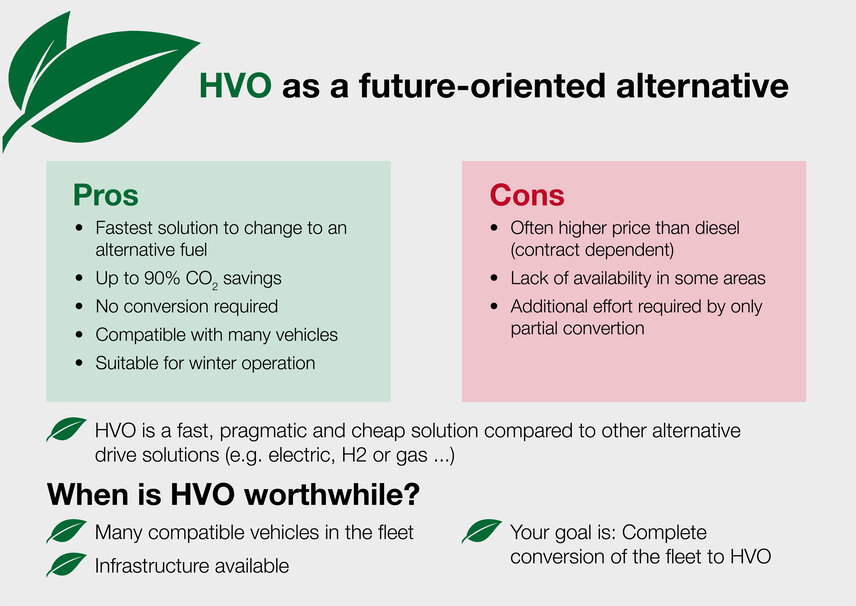The advantages of HVO
The main benefit: HVO can be used in many diesel engines without any technical modifications. Depending on the feedstock, it can reduce CO₂ emissions by up to 90% compared to fossil diesel. Numerous vehicles – such as sweepers, winter maintenance machines or multi-purpose carriers of the Aebi Schmidt product portfolio – are factory-fitted with HVO compatibility. HVO also performs reliably in cold conditions thanks to its excellent storage stability, making it ideal for winter operations.
Challenges
HVO is currently more expensive than fossil diesel, especially in smaller volumes. It is not yet widely available across all regions, and large-scale supply can be limited or logistically complex, depending on the location and supplier. Partial fleet conversions also increase operational complexity: two fuelling systems must be managed in parallel – including storage, logistics and staff training.
When Does HVO Make Sense?
Switching to HVO is particularly worthwhile when a significant portion of the fleet is already compatible, or when new equipment – such as our Schmidt jet sweepers, airport sweepers, the self-propelled snow clearing machine Supra and our airport sprayers and spreaders – can be run directly on HVO. A viable refuelling infrastructure is essential. Converting just a few individual vehicles usually brings little benefit in terms of cost or sustainability impact.

What Finavia says
“In a country with long, cold winters, reliability in winter maintenance is essential. Our HVO-powered vehicles have proven to perform strongly even in extreme temperatures. At the same time, we have been able to significantly reduce our emissions – without compromising operations. For us, HVO is a pragmatic example of the ways we develop our operations. Helsinki Airport and all our Lapland airports have already achieved the net zero emission level and our other airports will achieve it soon.”
– Tero Santamanner, Machine Equipment Specialist, Finavia Corp.

HVO is a real option
HVO is an immediately available tool for reducing emissions in airport operations – no technical barriers, but with clear requirements. With a holistic approach, smart infrastructure planning and a clear view of your fleet, HVO can deliver measurable impact today – while others are still preparing for tomorrow.
Wondering if your Aebi Schmidt fleet is HVO-ready? We’re here to support you with practical, transparent and tailored planning.
